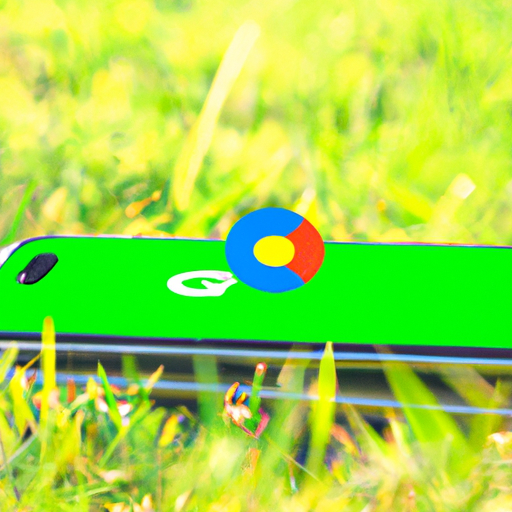How Google’s Failed Attempt to Beat Apple in AR Reveals the Power of Brand Loyalty
When Google announced its foray into augmented reality (AR) with the launch of Google Glass in 2013, it seemed like a surefire way to beat Apple in the AR race. After all, Google had the resources and the technology to make a splash in the market.
Unfortunately, Google’s attempt to beat Apple in AR was a spectacular failure. Despite its innovative features, Google Glass was met with a lukewarm reception from consumers. The device was expensive, bulky, and had limited functionality. It also raised privacy concerns, with many people worried about being recorded without their knowledge.
The failure of Google Glass reveals the power of brand loyalty. Apple has long been the leader in the AR space, and its loyal customers are unlikely to switch to a competing product. Apple has built a strong brand identity over the years, and its customers are fiercely loyal to the company.
Google’s failure to beat Apple in AR also highlights the importance of user experience. Apple has always focused on creating a seamless user experience, and this has been a key factor in its success. Google Glass, on the other hand, was clunky and difficult to use.
Google’s failed attempt to beat Apple in AR is a cautionary tale for tech companies. It shows that even the most powerful companies can fail if they don’t understand their customers and create a product that meets their needs. It also shows that brand loyalty is a powerful force that can’t be easily overcome.
Examining the Reasons Behind Google’s Failed Attempt to Compete with Apple in AR
Google’s attempt to compete with Apple in the Augmented Reality (AR) space was a valiant effort, but ultimately unsuccessful. While Google’s ARCore platform was a great start, it was unable to gain the traction needed to compete with Apple’s ARKit. So, what were the reasons behind Google’s failed attempt to compete with Apple in AR?
First, Google’s ARCore platform was not as user-friendly as Apple’s ARKit. ARCore was more complex and required developers to have a deeper understanding of the technology in order to create apps. This made it difficult for developers to create apps quickly and efficiently.
Second, Google’s ARCore platform was not as widely available as Apple’s ARKit. ARCore was only available on a limited number of devices, while ARKit was available on all Apple devices. This made it difficult for developers to create apps that could be used on a wide range of devices.
Third, Google’s ARCore platform was not as well-supported as Apple’s ARKit. Apple had a dedicated team of engineers and developers working on ARKit, while Google had a much smaller team working on ARCore. This meant that Google was unable to keep up with the rapid pace of development in the AR space.
Finally, Google’s ARCore platform was not as well-marketed as Apple’s ARKit. Apple had a well-established marketing strategy for ARKit, while Google had a much smaller marketing budget for ARCore. This meant that Google was unable to reach as many potential users as Apple was able to.
Ultimately, Google’s failed attempt to compete with Apple in AR was due to a combination of factors. Google’s ARCore platform was not as user-friendly, widely available, well-supported, or well-marketed as Apple’s ARKit. As a result, Google was unable to gain the traction needed to compete with Apple in the AR space.
What Google Could Have Done Differently to Beat Apple in AR

Google could have taken a different approach to beat Apple in AR. Instead of focusing on the hardware, Google could have focused on the software. By creating a more comprehensive and user-friendly AR platform, Google could have provided a better experience for users.
Google could have also focused on creating more content for its AR platform. By creating more engaging and interactive content, Google could have provided users with a more immersive experience. This could have been done by partnering with content creators and developers to create unique and engaging experiences.
Google could have also focused on creating more tools and features for its AR platform. By creating tools that make it easier for developers to create content, Google could have made it easier for developers to create content for its platform. This could have been done by creating tools that make it easier to create 3D models, animations, and other interactive elements.
Finally, Google could have focused on creating more partnerships with other companies. By partnering with companies that specialize in AR, Google could have created a more comprehensive platform. This could have been done by partnering with companies that specialize in hardware, software, and content creation.
By taking a different approach to AR, Google could have provided users with a more comprehensive and user-friendly experience. This could have been done by focusing on the software, creating more content, creating more tools and features, and creating more partnerships.
How Google’s Failed Attempt to Beat Apple in AR Could Impact Future AR Development
Google’s failed attempt to beat Apple in the augmented reality (AR) space could have a lasting impact on the development of AR technology. Google’s ARCore platform was designed to compete with Apple’s ARKit, but it failed to gain traction in the market.
Google’s ARCore was designed to be an open-source platform that would allow developers to create AR experiences for Android devices. The platform was designed to be more accessible than Apple’s ARKit, which is only available on iOS devices. Google hoped that by making ARCore open-source, it would be able to attract more developers and create a larger ecosystem of AR apps.
Unfortunately, Google’s plan didn’t work out. ARCore failed to gain traction in the market, and developers largely ignored the platform. This was due to a number of factors, including the fact that Apple’s ARKit was already well-established and had a larger user base. Additionally, Apple’s ARKit was more advanced than ARCore, and developers found it easier to develop for iOS than Android.
Google’s failed attempt to beat Apple in the AR space could have a lasting impact on the development of AR technology. For one, it could discourage developers from creating AR apps for Android devices. Additionally, it could lead to a lack of innovation in the AR space, as developers may be less likely to experiment with new ideas if they don’t think they’ll be able to monetize them.
Ultimately, Google’s failed attempt to beat Apple in the AR space could have a negative impact on the development of AR technology. However, it’s important to remember that this is just one example of how competition can affect the development of new technologies. As the AR space continues to evolve, it’s important for developers to remain open to new ideas and to continue to innovate.
Exploring the Impact of Google’s Failed Attempt to Beat Apple in AR on the AR Industry
Google’s failed attempt to beat Apple in the augmented reality (AR) industry has had a significant impact on the industry as a whole. While the tech giant’s ambitious project was ultimately unsuccessful, it has left a lasting impression on the AR industry and has helped to shape the future of the technology.
Google’s foray into the AR industry began in 2014 with the launch of its Project Tango. The project was designed to create a 3D mapping technology that would allow users to interact with their environment in a more immersive way. The project was met with much excitement and anticipation, as it promised to revolutionize the way people interacted with their environment.
Unfortunately, the project was ultimately unsuccessful. Google’s ambitious project was unable to compete with Apple’s ARKit, which was released in 2017. Apple’s ARKit was more advanced and had a larger user base, making it difficult for Google to compete.
Despite the failure of Project Tango, Google’s attempt to beat Apple in the AR industry has had a lasting impact. The project helped to raise awareness of the potential of AR technology and sparked a renewed interest in the industry. It also helped to push the boundaries of what was possible with AR technology, inspiring other companies to develop their own AR products.
Google’s failed attempt to beat Apple in the AR industry has also had a positive impact on the industry as a whole. The project helped to create a more competitive environment, which has led to more innovation and better products. It has also helped to drive down prices, making AR technology more accessible to the average consumer.
Overall, Google’s failed attempt to beat Apple in the AR industry has had a significant impact on the industry. While the project was ultimately unsuccessful, it has helped to shape the future of the technology and has had a positive impact on the industry as a whole.
